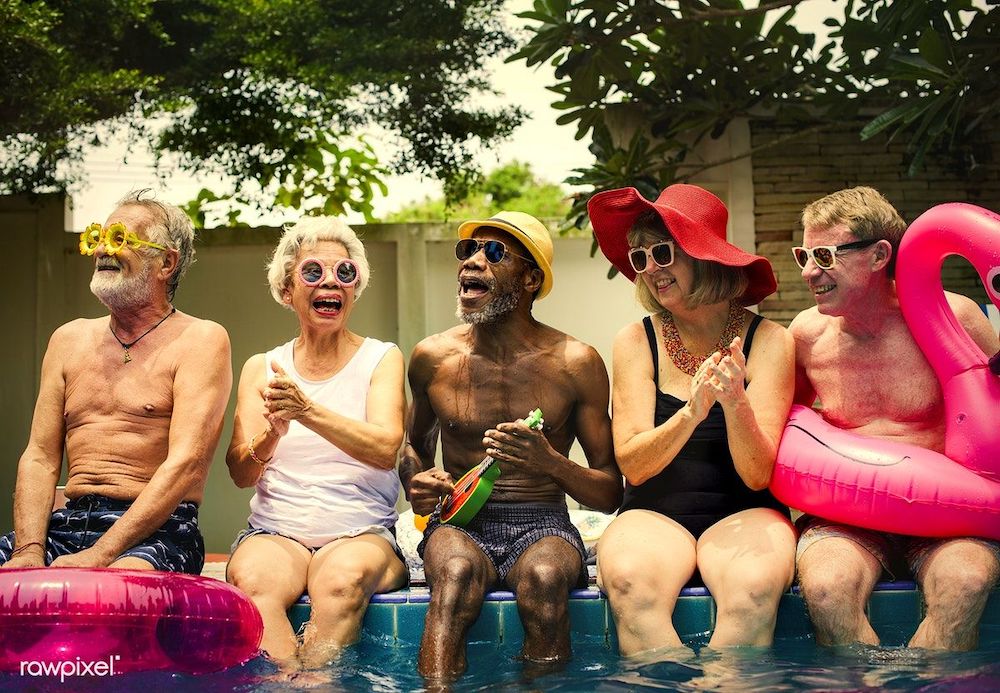The 65 and older population in the U.S. spends a lot of its $2.6 trillion in annual purchasing power on healthcare and caregiving. Older adults would like to spend more on independence and community and engagement and fun – a set of solutions still largely overlooked by most of Silicon Valley.
Early movers have begun to design new and better solutions for the vitality of older adult consumers.
Silicon-valley veterans AJ Viola and Zachary Hollander recently launched Cantina Communities, a living community that utilizes tech and modern design principles to help older adults stay engaged with their neighbors. They have secured land near Austin, Texas, where they are building a 6.5 acre neighborhood with modular homes and shared spaces. They engaged seniors throughout the design process: as they put it, “We start with a user need, and translate it into an experience people want.”
We’re also seeing a variety of new startups that harness technology to give older adults a digital voice. Veteran television producer Nathan Firer, launched Megilla, a video storytelling platform for older adults; users can pick from a library of more than 750 questions about their lives and personal stories, and share their video answers with friends and family. Meanwhile, Harvard MBA Amelia Lin cofounded Saga, an audio platform that sends older adults one question a week that they can answer by speaking into their phone.
We need even more creative people – UX experts, tech geeks, serial startup founders – to put as much work into developing platforms like Candoo as they do developing food delivery apps and the other kinds of tech we normally see coming out of Silicon Valley.
Untapped opportunity
Whenever you hear the words “older adults” in Silicon Valley or at most startup incubators around the country, they’re usually paired with another phrase: “health care”. The past decade’s startup boom has produced some important and exciting innovation around healthcare and caregiving for older adults, from telehealth and remote patient monitoring tools to scheduling tools for caregivers.
But the startup sector has misjudged the market demand for innovation focused on older adults’ sense of independence, their need for support and community, or their desire to stay intellectually engaged and have fun.
In our new report, Redesigning the Ecosystem for Aging Adults, we used data from the 2018 Consumer Expenditure Survey to measure how the average older adult prioritizes his or her spending, and then compared that with where innovation is occurring. We found that the percentage of startups working on health care was significantly higher than consumer spending. At the same time, the percentage of startups working on improving engagement for older adults was significantly lower.
Design higher up Maslow’s hierarchy
Social distancing has separated us from friends and family, cut us off from supportive communities, and dampened our ability to engage with the world and just have fun. Experts have pointed to rising levels of depression; one neuroscientist even pointed out that “Just like we’re worried about an economic recession, we should worry about a social recession.”
These feelings – of isolation, of disengagement, of overall failure to reach the top of half of Maslow’s hierarchy of needs – are feelings that many older adults feel all the time. Average life expectancy has shot up in the past few decades, now sitting at 83 for men and 85 for women. Widowed at home, transitioned to assisted living, older adults too often feel disengaged and separated from friends, dependent on children and caregivers, unable to feel independent.
Yet our startup economy is not building tools to connect older adults. America is in the middle of a social startup boom, with venture capital flowing at historic rates into companies that connect us with our peers and with the world. These startups help us communicate with our loved ones (Instagram, Twitter); give us more freedom and independence (Uber, TaskRabbit) and help us engage with the world (Houseparty, TikTok). However, there is surprisingly little tech designed to connect older adults with the world around them.
This speaks to a mentality issue in the startup community. Don Norman, a former VP at Apple and author on design, recently wrote about how products for older people tend to focus on function rather than beauty, and how major tech companies fail to consider older users when strategizing UX. When we interviewed entrepreneurs and investors, we heard that many decision-makers at VC firms are under the age of 40, and that the older adult market is seen as “niche” or “unsexy.” One entrepreneur put it more bluntly: “There is extreme ageism in Silicon Valley.”
As investors begin to take note of the opportunity, philanthropy needs to get involved, too. The SCAN Foundation, our partner on the report, is launching a project this summer aimed to inspire and enable entrepreneurs to create new offerings that enrich the lives of older adults, families, and communities – designing with older adults, not just for them. One of their goals is to create more pathways to venture funding for entrepreneurs building these products.
As we spend time indoors this spring, let’s think about how we can design products that help older adults enrich their lives – and that we can enjoy ourselves as we grow older.











